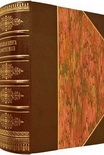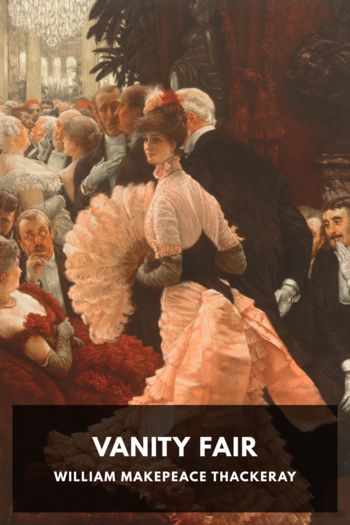Just Jackie Edward Klein (top 10 novels of all time .TXT) 📖

- Author: Edward Klein
Book online «Just Jackie Edward Klein (top 10 novels of all time .TXT) 📖». Author Edward Klein
John Corry’s article about the planned Onassis divorce appeared in The New York Times, April 12, 1975; details of the will on June 8, 1975; and Nicholas Gage’s article about the settlement between Christina and Jackie on September 20, 1977.
Nude photos of Jackie were published only in Europe until Hustler magazine broke the story in the United States, according to John Heidenry’s What Wild Ecstasy (Simon & Schuster, 1997).
The narrative of Judith Campbell Exner’s appearance before the Senate Select Committee on Intelligence Operations, chaired by Frank Church, was drawn from the following periodicals: “Church Denies Cover-Up of a Kennedy Friendship,” The New York Times, December 16, 1975; “Kennedy Friend Denies Plot Role,” The New York Times, December 18, 1975; “Addendum to the Kennedy Years,” The New York Times, December 21, 1975; William Satire’s “Murder Most Foul” column, The New York Times, December 22, 1975; “A Shadow over Camelot,” Newsweek, December 29, 1975; “Closets of Camelot,” Newsweek, January 19, 1976; Lewis Lapham’s “The King’s Pleasure,” Harper’s, March 1976; “Kennedys: More Pillow Talk,” Newsweek, March 1, 1976; and Nicholas Gage’s “Link of Kennedy Friend to Matia Still a Puzzle,” The New York Times, April 12, 1976.
Details of Jackie’s dealings with Christina and Artemis were drawn from interviews with Stelio Papadimitriou and anonymous sources.
Principal published sources include Stephen Birmingham’s Jacqueline Bouvier Kennedy Onassis (Grosset & Dunlap, 1978); Frank Brady’s Onassis (Prentice-Hall, 1977); Bob Colacello’s Holy Terror (HarperCollins, 1990); Lester David’s Jacqueline Kennedy Onassis (Birch Lane Press, 1994); L. J. Davis’s Onassis (St. Martin’s Press, 1986); Nigel Dempster’s Heiress (Grove Weidenfeld, 1989); Peter Evans’s Ari (Summit Books, 1986); Aristotle Onassis by Nicholas Fraser et al. (Lippincott, 1977); C. David Heymann’s A Woman Named Jackie (Lyle Stuart, 1989); Kitty Kelley’s Jackie Oh! (Lyle Stuart, 1979); Frieda Kramer’s Jackie (Grossett & Dunlap, 1979); Laurence Learner’s The Kennedy Women (Villard Books, 1994); Wendy Leigh’s Prince Charming (Dutton, 1993); Arianna Stassinopoulos’s Maria Callas (Simon & Schuster, 1981); and William Wright’s All the Pain That Money Can Buy (Simon & Schuster, 1991).
THIRTEEN: THE MYSTERIOUS M. T.
The account of Maurice Tempelsman’s background, business dealings, and developing relationship with Jackie was drawn from interviews with a number of friends and business associates of Tempelsman’s who wish to remain anonymous. In addition the author interviewed Hélène Arpels; Arnaud de Borchgrave; Frank Carlucci, former political officer at the U.S. Embassy in Kinshasa, Congo, former deputy director of the CIA, and former secretary of defense; Larry Devlin, former CIA station chief in Kinshasa; Roy Furmark; Jeffrey Gartner, dean of the Yale Business School; Brendan Gill; Brandon Grove, U.S. ambassador to Zaire, 1984–1987; Robert Oakley, U.S. ambassador lo Zaire, 1979–1982; Michael Schatzberg, author of a book on Mobutu; Sue Schmidt; Alex Shoumatoff; Adlai Stevenson Jr.; Jack Valenti; Dr. Herbert Weiss, director of Central Africa Project, Columbia University; and Melissa Wells, U.S. consulate general of Brazil, former U.S. ambassador to Zaire.
In an interview with the author, Rabbi Arthur Schneier discussed in general terms the legal requirements of a Jewish divorce or “get.”
The author also drew on accounts in periodicals for his description of Tempelsman’s relationship with Jackie. These include the author’s own cover story in the August 1989 issue of Vanity Fair titled “Jackie, Yo!”; Paula Span’s “The Man at Jackie’s Side: In Maurice Tempelsman, the Sophisticated Lady Has Finally Met Her Match,” The Washington Post, May 26, 1994; “The Man Who Loved Jackie; With Savvy, Cultivated Maurice Tempelsman, Jacqueline Kennedy Onassis at Long Last Found a Safe Haven—and Serenity,” People, July 11, 1994; Jessie Mangaliman’s “Jacqueline Kennedy Onassis—A City Mourns; Family Was Her Priority; Jackie’s Companion—A Loyal, Caring Advisor,” Newsday, May 21, 1994; Sandra Sanchez’s “Longtime Friend: “Journey Is Over,” “ USA Today, May 24, 1994; Susan Baer’s “Jacqueline Kennedy Onassis: 1929–1994; Onassis’s Longtime Companion Was Considered Family,” Los Angeles Times, May 24, 1994.
Periodical sources for the description of Maurice’s business dealings in Africa and elsewhere include “Maurice Tempelsman’s African Connections,” Fortune, November 15, 1982; “Maurice Tempelsman: Diamonds and Diplomacy,” Jewelers Circular Keystone, June 1989; “To De Beers on Prices: Don’t Kill Golden Goose,” Jewelers Circular Keystone, September 1989 and August 1991; Vladimir Kvint’s “Sorry Mr. Oppcnheimer,” Forbes, February 15, 1993; Rita Koselka’s “Brand Name Diamonds?” Forbes, April 28, 1986; Leon Dash’s “Zaire Gambles by Resigning Diamond Cartel,” The Washington Post, November 11, 1981; Howard W. French’s “In Africa, Wealth Often Buys Only Trouble,” The New York Tunes, January 25, 1998; James Ring Adams’s “Citizen Kennedy’s Energy,” The American Spectator, December 1997; “U.S. Diamond Dealer Turns Peacemaker,” Africa News, August 15, 1997; John Elvin’s “Angolan Angle,” The Washington Times, September 20, 1990; Jim McGee’s “Polishing Off a Ban on S. African Diamonds,” The Washington Post, January 25, 1990; The Orange County Register, June 29, 1989; and the London Mail on Sunday, May 22, 1994.
Primary published sources for this section include Carl Sferrazza Anthony’s As We Remember Her (HarperCollins, 1997), Lester David’s Jacqueline Kennedy Onassis (Birch Lane Press, 1994), C. David Hey-mann’s A Woman Named Jackie (Lyle Stuart, 1989), and Michael G. Schatzberg’s Mobutu or Chaos (University Press of America and Foreign Policy Research Institute, 1991).
Two excellent sources for information on Mama Mobutu’s funeral were Thomas M. Callaghy, professor of political science, University of Pennsylvania, and Crawford Young, professor of political science at the University of Wisconsin and co-author with Thomas Turner of The Rise and Decline of the Zairian State.
Primary published sources for details of Gbadolite and Mobutu’s fabulous palace there include Colette Braeckman’s Le Dinosaure: Le Zaire de Mobutu (Fayard, 1992) and a book by Pierre Janssen, one of Mobutu’s sons-in-law, titled A La Cour de Mobutu (Editions Michel Lafon, 1997).
The author also drew on accounts in periodicals for details on Mobutu’s life in Zaire, including “Rebel With a Cause,” Vanity Fair, August 1997, and articles in The New York Times and The Washington Post, September 8, 1997.
FOURTEEN: SINGLE WORKING WOMAN
The account of Jackie and Lee Radziwill’s falling out over Lee’s aborted marriage to Newton Cope





Comments (0)